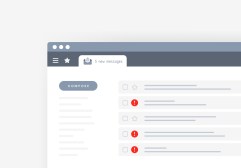Navigating Your Finances: The Role of Cash Flow Statements in Business Success
Understanding your business’s financial health is crucial for making informed decisions. One of the essential tools for this is the cash flow statement, which provides insight into how cash moves in and out of your business. In this article, we’ll explore what a cash flow statement is, why it’s important, and how to read and interpret it effectively.
What is a Cash Flow Statement?
A cash flow statement is a financial report that details the inflow and outflow of cash within a company over a specific period. It categorizes cash flows into three main sections: operating activities, investing activities, and financing activities. This document helps stakeholders understand how well a company generates cash to pay its debts and fund its operating expenses.

Why Are Cash Flow Statements Important?
Cash flow statements are vital for several reasons. They allow businesses to assess their liquidity—meaning their ability to meet short-term obligations. By analyzing these statements, business owners can identify patterns in their company’s cash management practices, recognize potential shortfalls before they become issues, and make strategic decisions about investments or cost-cutting measures.
How to Read a Cash Flow Statement
Reading a cash flow statement involves understanding the three primary sections. First, focus on the operating activities section; it shows how much money the company generated from core operations by adjusting net income for non-cash items like depreciation. Next, look at investing activities; this part reveals money spent on capital expenditures or received from sales of assets. Lastly, analyze financing activities which indicate how much money has been borrowed or repaid during that period.
Key Components to Look For
When examining a cash flow statement, pay attention to certain key components: net increase or decrease in cash indicates overall performance; major inflows can highlight strong sales while significant outflows may signal investments or debt repayments; negative figures here could be red flags indicating financial instability if not accompanied by growth expectations.
Using Insights from Cash Flow Statements
Once you have read and understood your cash flow statement, use that information strategically. Create budgets based on historical patterns demonstrated in these reports; forecast future performance by considering trends found therein; utilize insights gained to improve decision-making processes related to investments and operational efficiencies.
In conclusion, mastering the reading and understanding of your company’s cash flow statement is fundamental for successful financial navigation in any business environment. By leveraging this powerful tool effectively alongside other financial documents like income statements and balance sheets can lead you toward greater profitability and sustainability.
This text was generated using a large language model, and select text has been reviewed and moderated for purposes such as readability.











